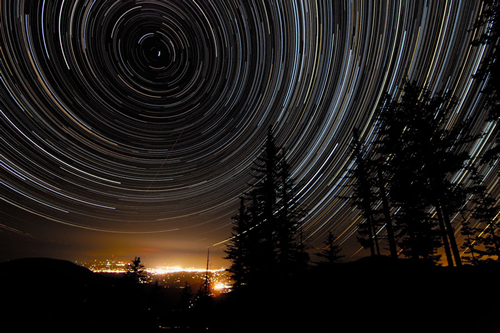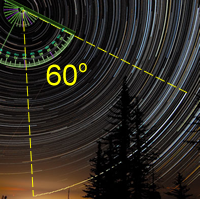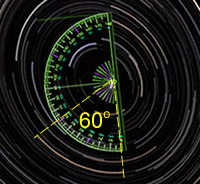Diurnal motion and the Pole Star The stars are so far away that they seem to be fixed in a pattern for us. The view of the stars seen by the ancients is virtually the same as the one we see now. As the Earth spins on its axis, our view of the sky changes, the sky seems to rotate around us. This motion is called diurnal motion. With old film cameras it was possible to set the camera with a very long exposure time and to take a photo of the night sky. The aperture was open for a long time and only tiny amounts of light entered the camera, but for a long time, Therefore the film was exposed by the starlight, however as the stars moved across the sky the path they took was traced out on the film. With modern cameras we can take photographs of the same piece of sky a minute or so apart over several hours and then amalgamate them into a single image. When we do that we get a picture that shows beautiful concentric star trails. These star trails trace the path of the light from the stars as they move across the aperture of the camera.. This photograph shows partial-circle star trails pictured above over Grants Pass, Oregon, USA in August 2009. It was taken by Joshua Bury and is reporoduced with his kind permission. If you wish to use this photograph please contact him and ask for his permission first. Near the middle of the circles is the North Celestial Pole (NCP), easily identified as the point in the sky at the center of all the star trail arcs. The star Polaris, commonly known as the Pole Star or the North Star, made the very tiny bright arc near the NCP. It hardly moves at all and has been used as a navigation pointer by travellers for a long time. About 12,000 years ago, the bright star Vega was the North Star, and in about 14,000 years, as the Earth's spin axis slowly continues to precess, Vega will become the North Star again. If the camera was able to record the star trails for 24 hours we would see full circles, for 12 hours we would see semi-circles, for 6 hours a quarter of a circle path. From the photo we can work out how long the exposure was. To do this we would need to choose an arc star trail. We would then need to draw in the lines from each end of the acr to the NCP. We then measure the angle that subtends the arc - the angle that the lines make at the NCP. The Maths
Taking any star trail we can work out the exosure time (or rather the time over which the series of photographs was taken):
|
Follow me...
|









